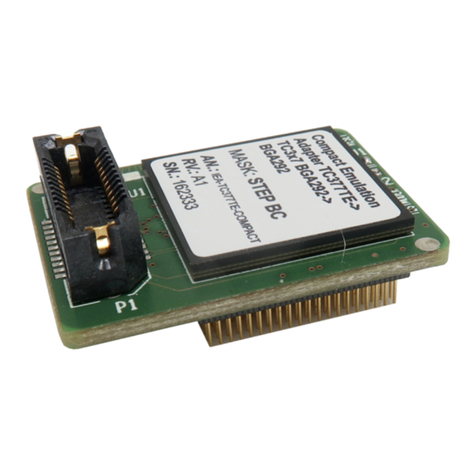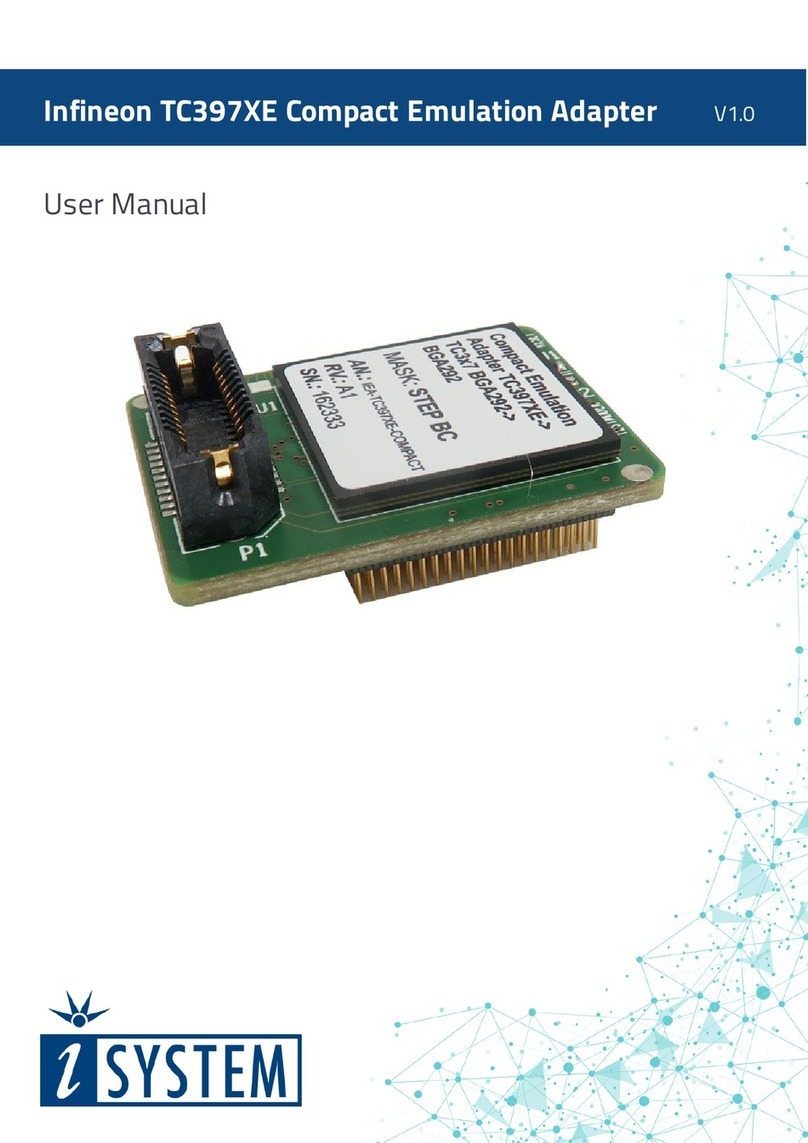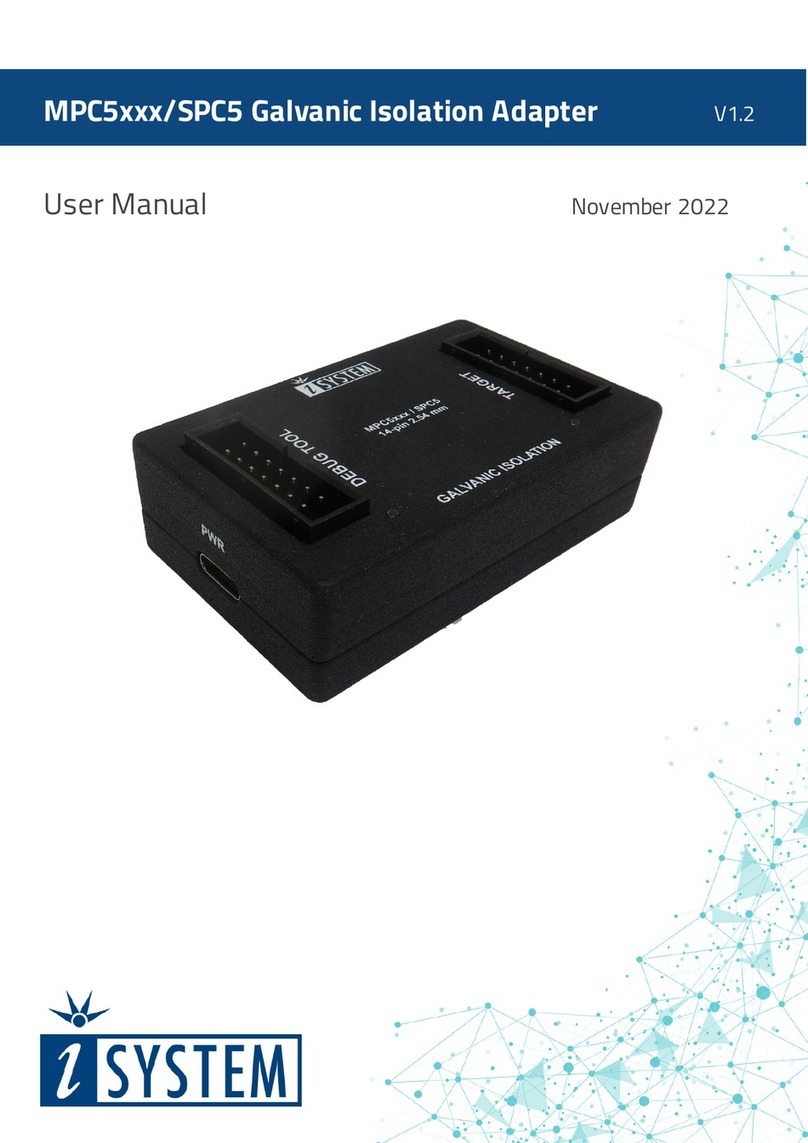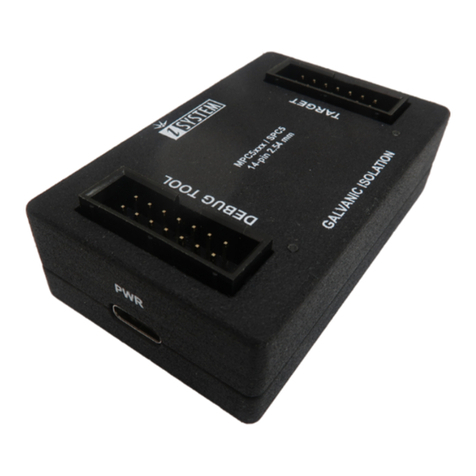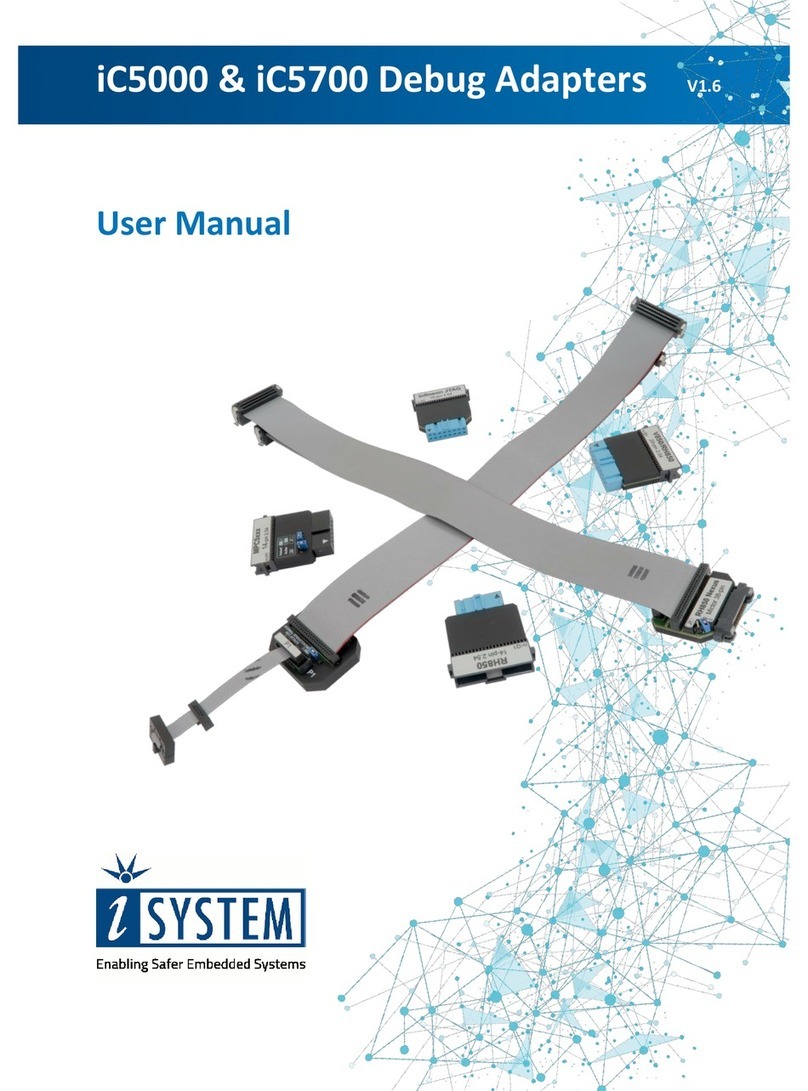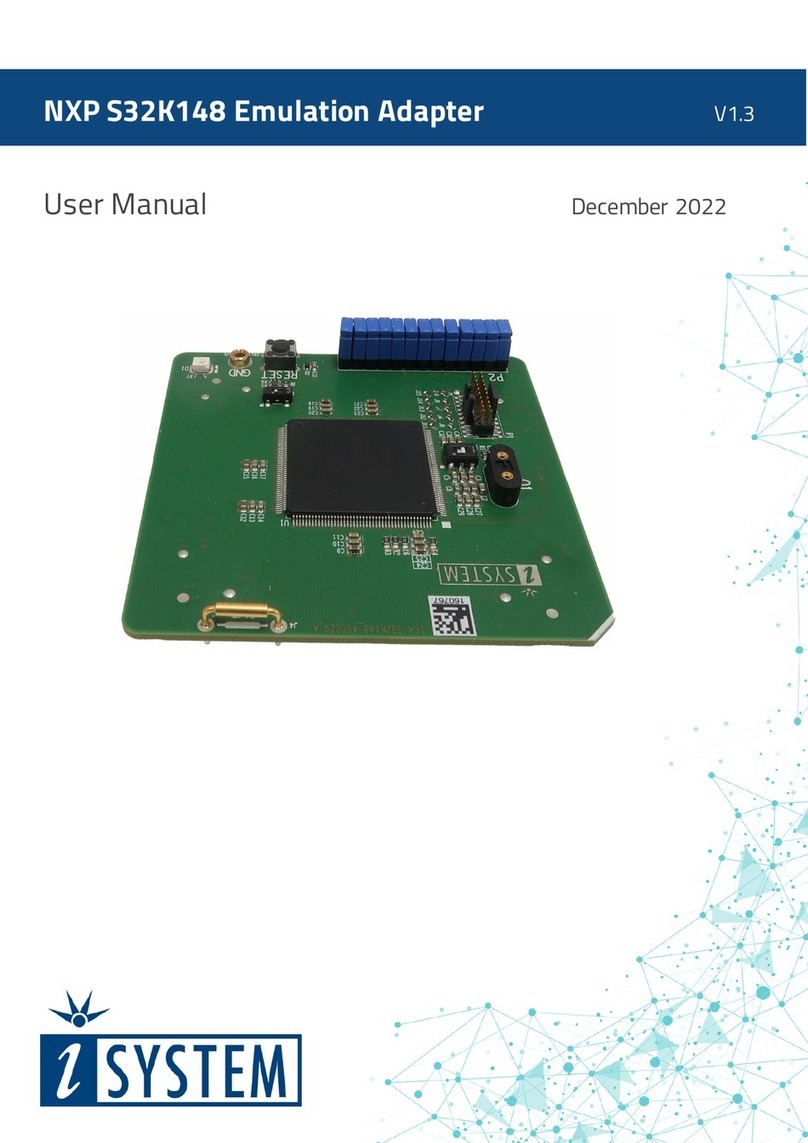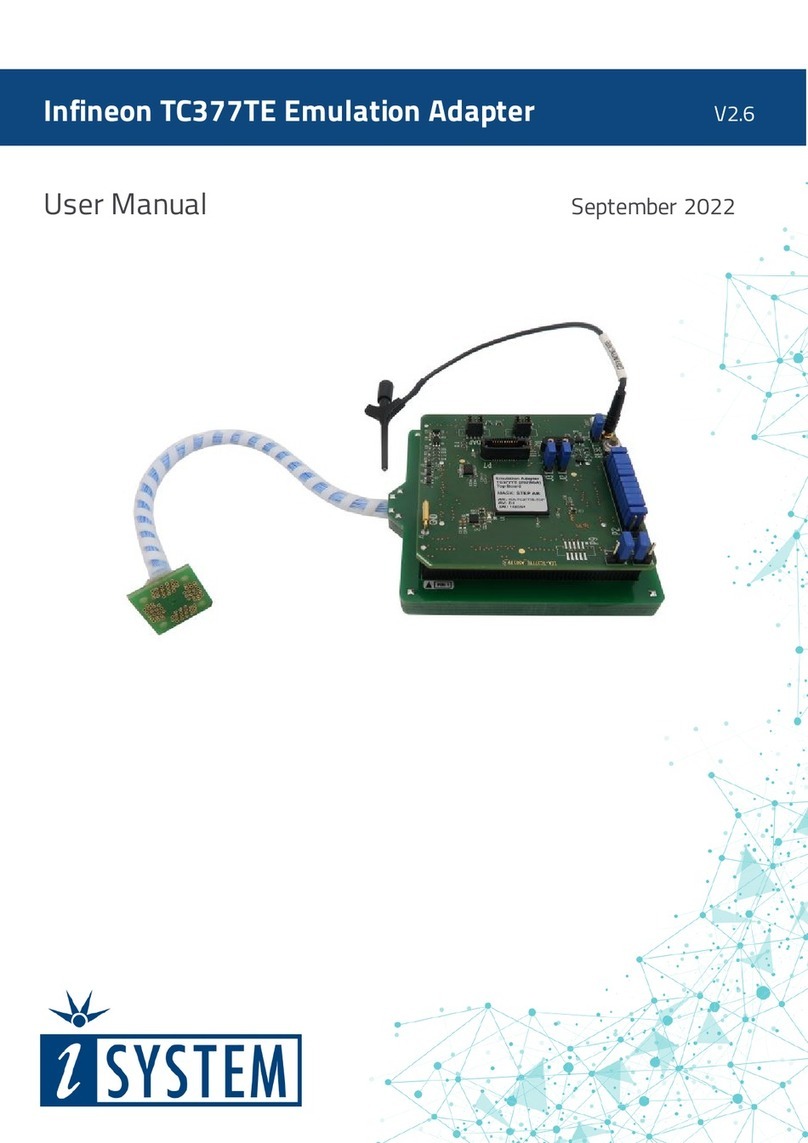
Contents
Infineon TC377TE
Package content ...................................................................................................................................... 6
Options ....................................................................................................................................................... 7
Target adaptation .............................................................................................................................................................................................................7
Measurement board .....................................................................................................................................................................................................10
Operation ................................................................................................................................................ 11
How to connect .................................................................................................................................................................................................................11
Configuration .....................................................................................................................................................................................................................11
Connectors ..........................................................................................................................................................................................................................14
Standalone operation ..................................................................................................................................................................................................15
Mechanical information ....................................................................................................................... 17
Emulation Adapter .........................................................................................................................................................................................................17
Solder parts ........................................................................................................................................................................................................................17
Extenders .............................................................................................................................................................................................................................19
Assembly ................................................................................................................................................. 20
QFP Fixed ..............................................................................................................................................................................................................................20
QFP Flex ................................................................................................................................................................................................................................22
BGA ...........................................................................................................................................................................................................................................23
Accessories ............................................................................................................................................. 25
Schematics ............................................................................................................................................. 26
User Notes .............................................................................................................................................. 27
